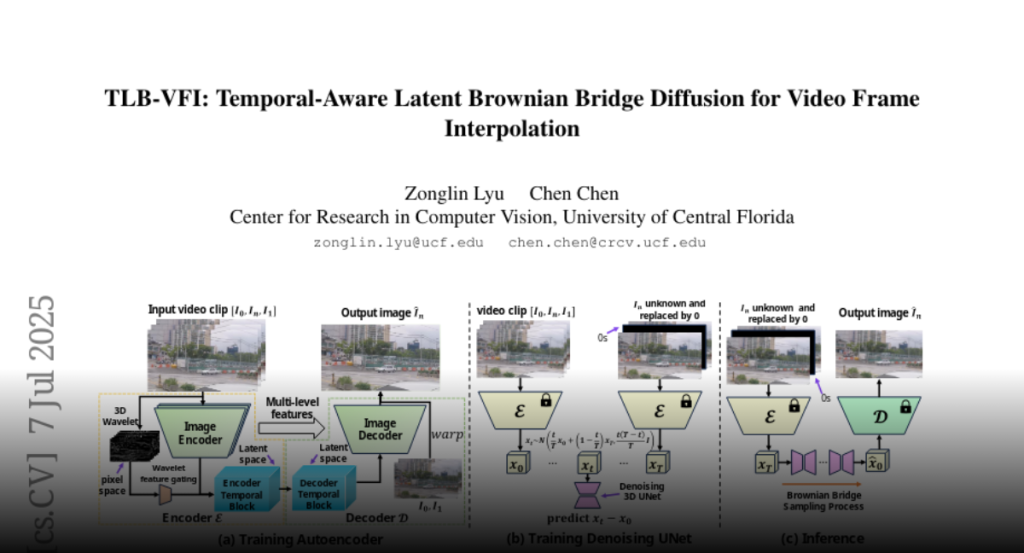Temporal-Aware Latent Brownian Bridge Diffusion for Video Frame Interpolation (TLB-VFI) improves video frame interpolation by efficiently extracting temporal information, reducing parameters, and requiring less training data compared to existing methods.
Video Frame Interpolation (VFI) aims to predict the intermediate frame I_n
(we use n to denote time in videos to avoid notation overload with the timestep
t in diffusion models) based on two consecutive neighboring frames I_0 and
I_1. Recent approaches apply diffusion models (both image-based and
video-based) in this task and achieve strong performance. However, image-based
diffusion models are unable to extract temporal information and are relatively
inefficient compared to non-diffusion methods. Video-based diffusion models can
extract temporal information, but they are too large in terms of training
scale, model size, and inference time. To mitigate the above issues, we propose
Temporal-Aware Latent Brownian Bridge Diffusion for Video Frame Interpolation
(TLB-VFI), an efficient video-based diffusion model. By extracting rich
temporal information from video inputs through our proposed 3D-wavelet gating
and temporal-aware autoencoder, our method achieves 20% improvement in FID on
the most challenging datasets over recent SOTA of image-based diffusion models.
Meanwhile, due to the existence of rich temporal information, our method
achieves strong performance while having 3times fewer parameters. Such a
parameter reduction results in 2.3x speed up. By incorporating optical flow
guidance, our method requires 9000x less training data and achieves over 20x
fewer parameters than video-based diffusion models. Codes and results are
available at our project page: https://zonglinl.github.io/tlbvfi_page.

